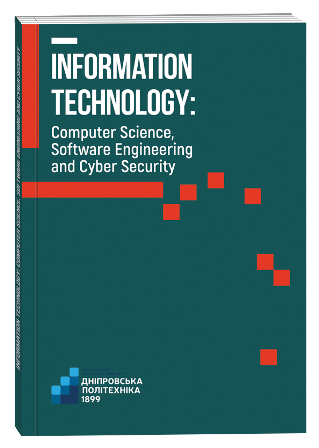SOFTWARE MODELLING OF ACOUSTIC VIBRATIONS IN CONFINED SPACES
DOI:
https://doi.org/10.32782/IT/2025-1-24Keywords:
Acoustic modelling, Sound waves, Numerical methods, Microphone arrays, Sound source localization.Abstract
The paper presents software developed for modelling and analysing the acoustic environment. The aim is to develop software for modelling and analysing complex acoustic processes in confined environments and to accelerate its operation due to modular architecture, parallelisation of computations and multi-threaded data processing in the numerical implementation of boundary value problems for acoustic equations. Methodology. A modular approach to the development of software architecture is used. Computer modelling of sound wave propagation is based on the fundamentals of mathematical physics and finite and boundary element methods for solving acoustic equations. Mechanisms to support parallel computing are used to speed up the work. The scientific novelty lies in developing software for sound wave simulation with a modular architecture that includes boundary value problems for acoustic equations, methods for their numerical analysis, and interactive visualisation of results, with the possibility of parallelising computations when solving mathematical physics equations. Conclusions. Methods of sound wave simulation have been investigated. The software has been developed with a special focus on localising sound sources using microphone arrays and optimising algorithms for processing complex acoustic scenarios. The presented solution is focused on a wide range of applications, including sound physics research and intelligent systems design.
References
Scheibler R., Bezzam E., Dokmanic I. Pyroomacoustics: A Python Package for Audio Room Simulation and Array Processing Algorithms. (2017). https://doi.org/10.1109/ICASSP.2018.8461310
Salmon F., Verron Ch., Camier C., Malgrange M. Adaptation and evaluation of Pyroomacoustics for auralization purposes. INTER-NOISE and NOISE-CON Congress and Conference Proceedings. 2024. 270. 5906–5917. https://doi.org/10.3397/IN_2024_3660
C. Othmani et al. A review of the state-of-the-art approaches in detecting time-of-flight in roomimpluse responses, Sensors and Actuators: A. Physical, 2024. vol. 374, doi: https://doi.org/10.1016/j.sna.2024.115467
Sanguano D., Lucio Naranjo J., Tenenbaum R., Sampaio-Regattiere G. B. Real-time impulse response: a methodology based on Machine Learning approaches for a rapid impulse response generation for real-time Acoustic Virtual Reality systems. Intelligent Systems with Applications. 2023. 21. 200306. https://doi.org/10.1016/j.iswa.2023.200306
Vairetti G., De Sena E., Catrysse M., Jensen S. H., Moonen M., van Waterschoot T. A Scalable Algorithm for Physically Motivated and Sparse Approximation of Room Impulse Responses With Orthonormal Basis Functions. in IEEE/ACM Transactions on Audio, Speech, and Language Processing, 2017. vol. 25, no. 7, pp. 1547–1561, July 2017, doi: https://doi.org/10.1109/TASLP.2017.2700940
Zhao S., Zhu Q., Cheng E., Burnett I. S. Erratum: A roomimpulse response database for multizone sound field repro-duction (L) [J. Acoust. Soc. Am. 152(4), 2505–2512 (2022)]. 2024. J. Acoust. Soc. Am., 155, 2170.
Zahynailo Ye., Prihodchenko S. Development of localization tools and consideration of basic acoustic localization methods. COMPUTER-INTEGRATED TECHNOLOGIES: EDUCATION, SCIENCE, PRODUCTION. 2024. 160–164. https://doi.org/10.36910/6775-2524-0560-2024-56-20
Prykhodchenko S., Koriashkina L., Shevtsova O., Zahynailo Ye. Conceptual model of the software architecture for processing multisource acoustic signals. Information Technology: Computer Science, Software Engineering and Cyber Security. 2024. № 4.







